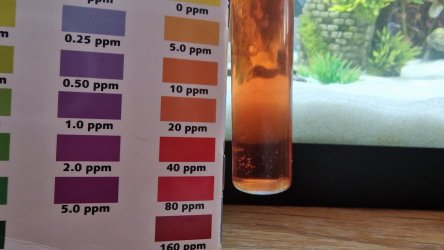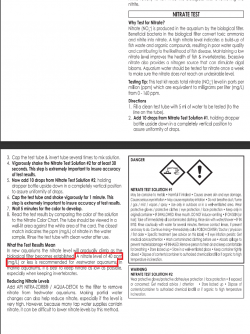All I was saying really is I wouldn't even worry if they were at 20ppm, API instructions state just to keep them below 40ppm in a freshwater tank, the trouble with the API kit is Nitrate is very difficult to read, see my picture beelow, ive just completed this test after a 30% water change, my tap water after treatment is 0.25ppm NO3, is my test result 5, 10 or 20ppm.I'm not really sure as to what you are trying to tell me. I know the nitrogen cycle and realize that nitrates are the end result. My ammonia and nitrates are zero or close enough to not matter. With my tank being planted I want to see some nitrates. With what I have I consider 0 ammonia, 0 nitrites and 10 or less on nitrates just about as perfect as you can get with a heavily planted tank. Is there something I'm missing??
Also, according to the API website instructions, no where in there does it state you need to shake bottle one nor the test tube after youve added bottle 1 for 2 mins, im sure if this was the case they would of revised the instructions.
API® | FRESHWATER MASTER TEST KIT
The API FRESHWATER MASTER TEST KIT measures the 4 most important levels in freshwater aquariums quickly and accurately, including pH, high range pH, ammonia, nitrite, and nitrate.
Attachments
Last edited:



